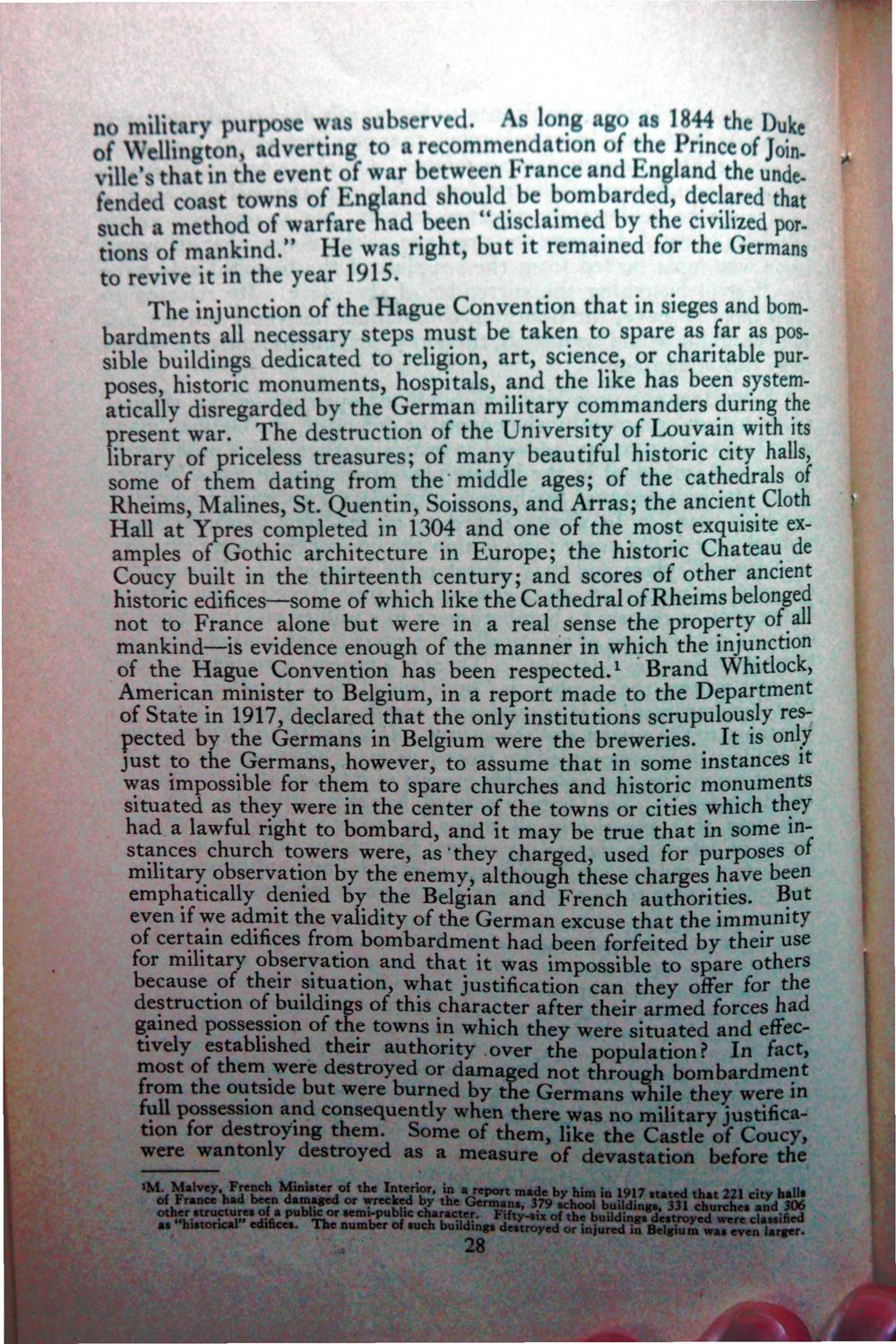| |
| |
Caption: War Publications - WWI Compilation 1923 - Article 14
This is a reduced-resolution page image for fast online browsing.

EXTRACTED TEXT FROM PAGE:
no military purpose was subserved. As long ago as 1844 the Duke of Wellington, adverting to a recommendation of the Prince of Join, ville's that in the event of war between France and England the undefended coast towns of England should be bombarded, declared that such a method of warfare nad been "disclaimed by the civilized portions of mankind." He was right, but it remained for the Germans to revive it in the year 1915. The injunction of the Hague Convention that in sieges and bombardments all necessary steps must be taken to spare as far as possible buildings dedicated to religion, art, science, or charitable purposes, historic monuments, hospitals, and the like has been systematically disregarded by the German military commanders during the present war. The destruction of the University of Louyain with its library of priceless treasures; of many beautiful historic city halls, some of them dating from the middle ages; of the cathedrals of Rheims, Malines, St. Quentin, Soissons, and Arras; the ancient Cloth Hall at Ypres completed in 1304 and one of the most exquisite examples of Gothic architecture in Europe; the historic Chateau de Coucy built in the thirteenth century; and scores of other ancient historic edifices—some of which like the Cathedral of Rheims belonged not to France alone but were in a real sense the property of all mankind—is evidence enough of the manner in which the injunction 1 of the Hague Convention has been respected. Brand Whidock, American minister to Belgium, in a report made to the Department of State in 1917, declared that the only institutions scrupulously respected by the Germans in Belgium were the breweries. It is only just to the Germans, however, to assume that in some instances it was impossible for them to spare churches and historic monuments situated as they were in the center of the towns or cities which they had a lawful right to bombard, and it may be true that in some instances church towers were, as'they charged, used for purposes of military observation by the enemy, although these charges have been emphatically denied by the Belgian and French authorities. But even if we admit the validity of the German excuse that the immunity of certain edifices from bombardment had been forfeited by their use for military observation and that it was impossible to spare others because of their situation, what justification can they offer for the destruction of buildings of this character after their armed forces had gained possession of the towns in which they were situated and effectively established their authority over the population? In fact, most of them were destroyed or damaged not through bombardment from the outside but were burned by the Germans while they were in full possession and consequently when there was no military justification for destroying them. Some of them, like the Castle of Coucy, were wantonly destroyed as a measure of devastation before the im in 1917 stated that 221 city halls hool buildings, 331 churches and 306 uxner u r c i u . ; : . « * V"™%™ .cm.-puo.ic cnaracier. Fifty-fix of the buildings destroyed were classified as "historical edifices. The number of such building, destroyed or injured in Belgiu m was e v e n ' l i n e r . 28
| |